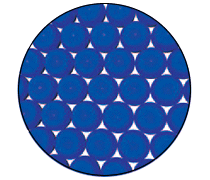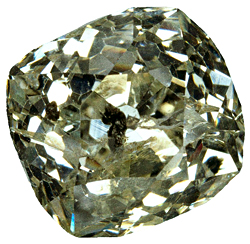DK Science: Solids
Solids are one of the three states of matter and, unlike liquids or gases, they have a definite shape that is not easy to change. Different solids have particular properties such as stretch, STRENGTH, or hardness that make them useful for different jobs. Most solids are made up of tiny crystals. This is because their particles are arranged in a regular pattern, called a CRYSTALLINE STRUCTURE.

Solids behave as they do because of the way their particles are arranged. The particles of a solid are linked by strong forces, which pull the particles tightly together. So, although the particles can vibrate, they cannot move about easily. This arrangement explains why solids usually keep their shape and feel firm.
Some solids can be hammered or squashed into many different shapes without breaking. They are known as malleable materials. Other solids, such as biscuits or glass, will not bend when hammered or squashed, but will break and split. These materials are brittle.
Shape memory metals can remember their shape. When brought to a certain temperature, these metals can be set to a shape that they never forget. They have many uses, including repairing broken bones. Even if the bones move, the metal always returns to its original shape, bringing the bones back to their correct position.
Some solids, such as the metal copper, can be pulled and stretched easily into extremely thin wires. They are known as ductile materials. They have this property because their particles are not held in a rigid structure, but are arranged in rows that can slide past one another. Copper can be stretched into a thread half the width of a human hair, and is used in many kinds of wiring, including electrical and telephone wiring.
Some solids, such as steel or concrete, are difficult to break, even if they are made to carry a heavy weight. This is because their particles are bound together very strongly. Such materials are said to have high strength and are used to construct bridges and buildings. Strength is a different property from hardness. Hard materials cannot be bent or scratched easily.
Hardness is a measure of how easily a material can be scratched. Mohs hardness scale arranges 10 minerals from 1 to 10. The higher the number, the harder the mineral. Each mineral in the scale will scratch all those below it. Other materials can be compared to these minerals. Copper, for example, has a hardness of 2.5.
Most solids, such as metals, salt, and sugar, are made up of tiny crystals. Their particles are arranged in regular three-dimensional patterns such as cubes or hexagonal shapes. Not all solids are like this, however. The particles of glass, for example, are not arranged in a regular pattern, and so glass does not have a crystalline structure. Its structure is described as amorphous.



